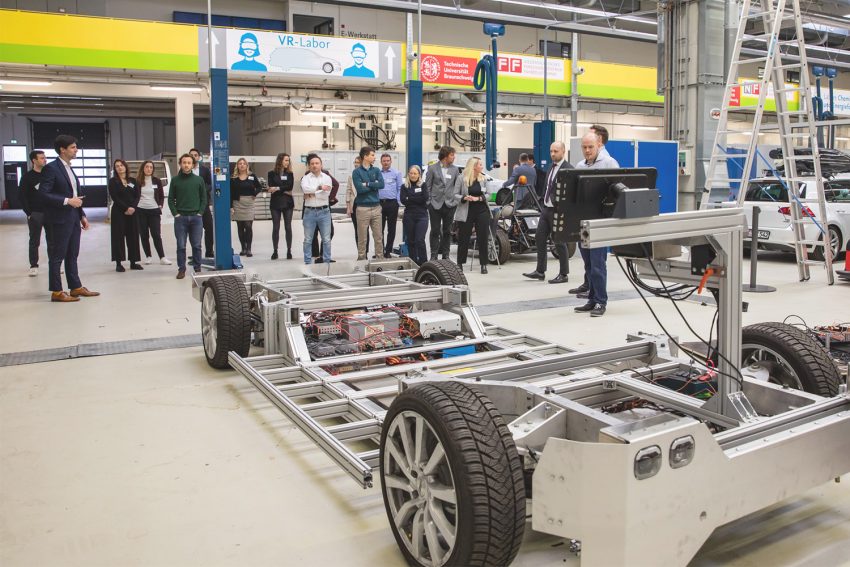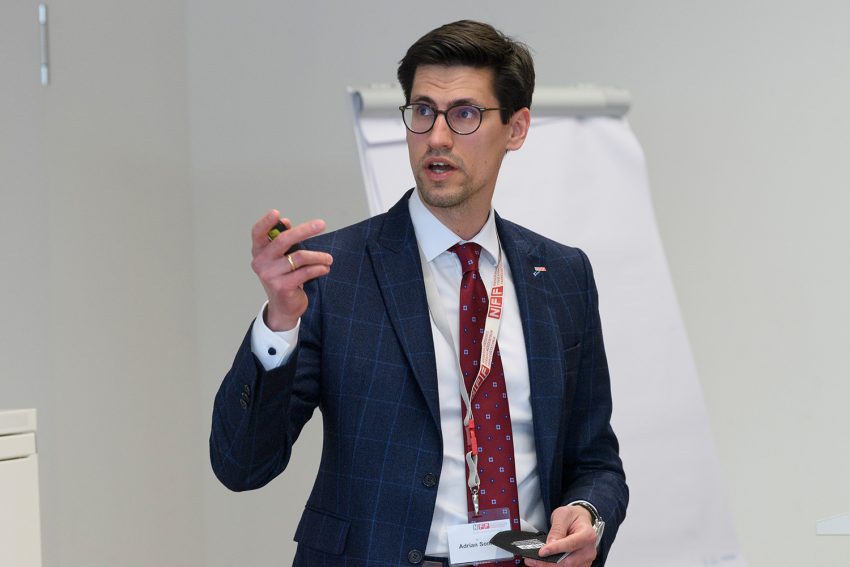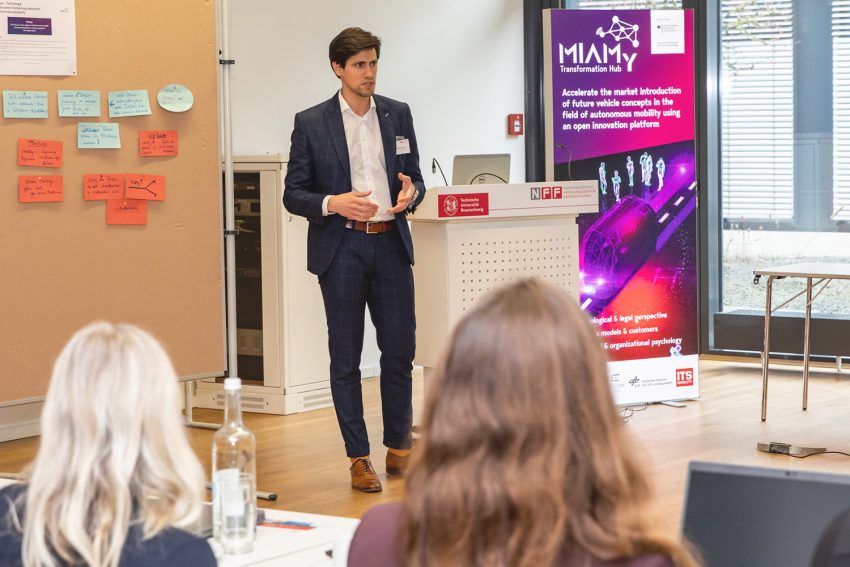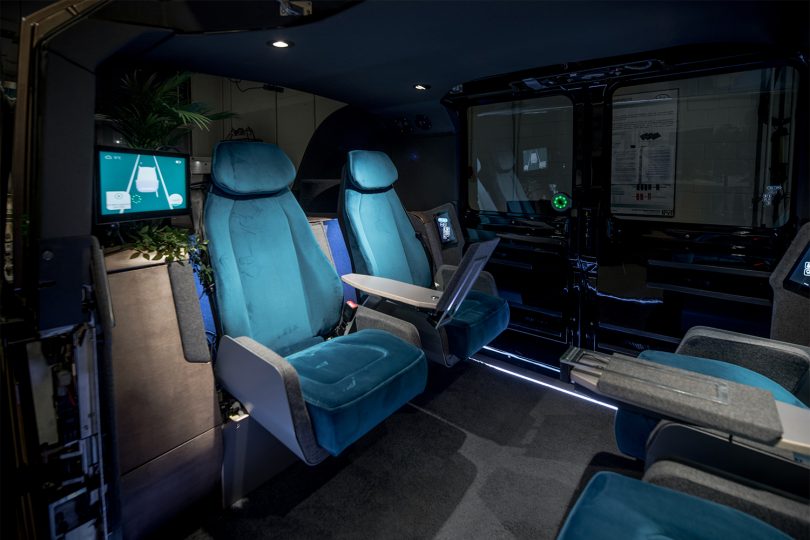What hurdles autonomous driving still has to overcome TU Braunschweig researches how to accelerate time to market
Science, research and industry are working ambitiously to make our everyday lives safer and easier with autonomous vehicles. The technologies are developing rapidly, with use cases such as shuttle services and automated parking being tested and maturing. However, there are still a number of hurdles to overcome before the technologies can be brought to market and deployed on a large scale – these include technical issues as well as social acceptance and policy and regulatory frameworks. Dr Adrian Sonka, Managing Director of the Automotive Research Centre Niedersachsen (NFF), explains what these are and how Technische Universität Braunschweig is helping to shape them.
Dr Sonka, what are the biggest challenges at the moment in making truly autonomous driving a reality in everyday life?
Technically, development is already very advanced. Most vehicle manufacturers already have more highly automated functions (level 3+) either in series production or in series development. The foundations for autonomous driving (level 4 / 5) therefore look very good, although there are of course still gaps in research and potential for improvement in terms of reliable perception, road friction detection or prediction.
“Major challenges are more likely to be found in non-technical areas”.
Major challenges are more likely to be found in non-technical areas such as legal issues (registration, operating licences, data protection), customer confidence and acceptance, and in the area of viable business models – in short, in designing autonomous vehicles and mobility concepts that are as market-driven as possible.
When it comes to mobility concepts, completely new degrees of freedom arise when the role of the driver changes to that of a passenger and elements such as the accelerator, brake and steering wheel are removed. Modular systems are conceivable, and the vehicle interior also offers great potential for redesign – much of which can already be seen in concept studies by various manufacturers.
There are large fluctuations in sales and acceptance in the field of electric mobility. What lessons can we learn from the e-car, for example, for the market launch of autonomous vehicles?
This is a very exciting question, because there are certain parallels, especially in terms of infrastructure: while the charging network has a direct impact on the use of e-mobility, the digital infrastructure (Car2X road-side units for traffic light signal transmission, environmental monitoring of blind spots, GPS coverage) and high-precision maps for autonomous driving play an important role in its possible use and thus in developing its potential for customers.
However, there are differences compared to an electric vehicle, as driving safety plays a completely different role in autonomous operation, new usage concepts arise, and the system can also be switched off at any time. From a customer perspective, acceptance and trust in the vehicle are therefore relevant. Our research has shown that there are major demographic and cultural differences in expectations around the world, so development should always be based on target groups and markets.
Within the NFF, we are tackling this challenge through interdisciplinary collaboration and strong involvement of the public and test subjects within real-world laboratories, so that feedback on the driving functions can be incorporated into the process at an early stage.

At the launch of the MIAMy project, which aims to bring autonomous vehicle concepts to the road. Photo credit: NFF/Ziebart
Could you briefly describe the timeframe that can be expected when a new, innovative vehicle concept has reached pre-production maturity and is now ready for commercialisation?
This is actually not so easy to answer because this process for autonomous vehicles is being carried out for the first time in many places and there is a lack of experience. Internationally, the situation is very confusing due to the large number of competitors, especially in the US and Asia, and it changes on a weekly basis. In the ownership sector, i.e. private cars, we are still a long way from the introduction of autonomous concepts. Even for mobility providers and commercial vehicle manufacturers (of minibuses and shuttles), as well as research institutions (test operations), there are uncertainties about the approval process, the definition of the operating area, testing and validation, and proof of safety. Over the next few years, however, we will be able to learn a lot about this, including from our own experience.
The MIAMy project, one of eleven transformation hubs designed to bring autonomous vehicle concepts to the road, is investigating how to make the launch a success. What specific issues are being addressed?
MIAMy is tackling the aforementioned challenges with a strong interdisciplinary approach in collaboration with six institutes of the NFF at TU Braunschweig, the Institute of Transport Systems Technology at DLR and Ingolstadt University of Applied Sciences. The fourth partner, ITS Mobility, is also responsible for project management.
“From a customer and business model perspective, there is still too much of a product focus. In addition, the specific expectations of all stakeholders are unclear to us.”
On the technology side, we are looking at issues such as predictive safety systems, harmonised validation processes and the role of AI. From a customer and business model perspective, there is still too much product focus. In addition, the specific issues and expectations of all players in the value chain are unclear to us. From a legal point of view, there is the question of authorisation and data protection for the ever-increasing data streams in vehicles. At an even higher level, industrial and organisational psychology looks at how employees can best develop their skills in the future and how the introduction of autonomous driving will change organisations.
How does MIAMy tackle this issue?
We have developed a portfolio of services based on five pillars, which include the following elements:
- A connective open innovation platform that enables data sharing using open source technologies and also includes real-world laboratory elements
- An information offering that includes knowledge tools and technology radars, as well as a stakeholder map and legal checklists and guidelines
- Training programmes that didactically prepare the R&D results available from partners for workshops
- Bilateral transformation projects followed by exchanges, including the development of best practices based on concrete examples
- The network and research community is also extremely important, which includes exchanges with other transformation hubs and stakeholders, as well as the organisation of events and network meetings
So how do the developed market launch tools get to the right places in the industry?
Through our network, we maintain very close contact with all stakeholders in the autonomous driving value chain and consistently involve them in the MIAMy project from an early stage, for example by asking for specific requirements. This is achieved through regular workshops with a wide range of associated project partners and online surveys. All services offered by the Transformation Hub are therefore focused on real challenges and are designed to generate direct benefits for the target group (SMEs, start-ups, mid-sized companies, OEMs, local authorities). Our mission is to make the knowledge generated by research and science as directly usable as possible in order to reduce the barriers to market entry for autonomous vehicles.
Dr Sonka, thank you very much.



